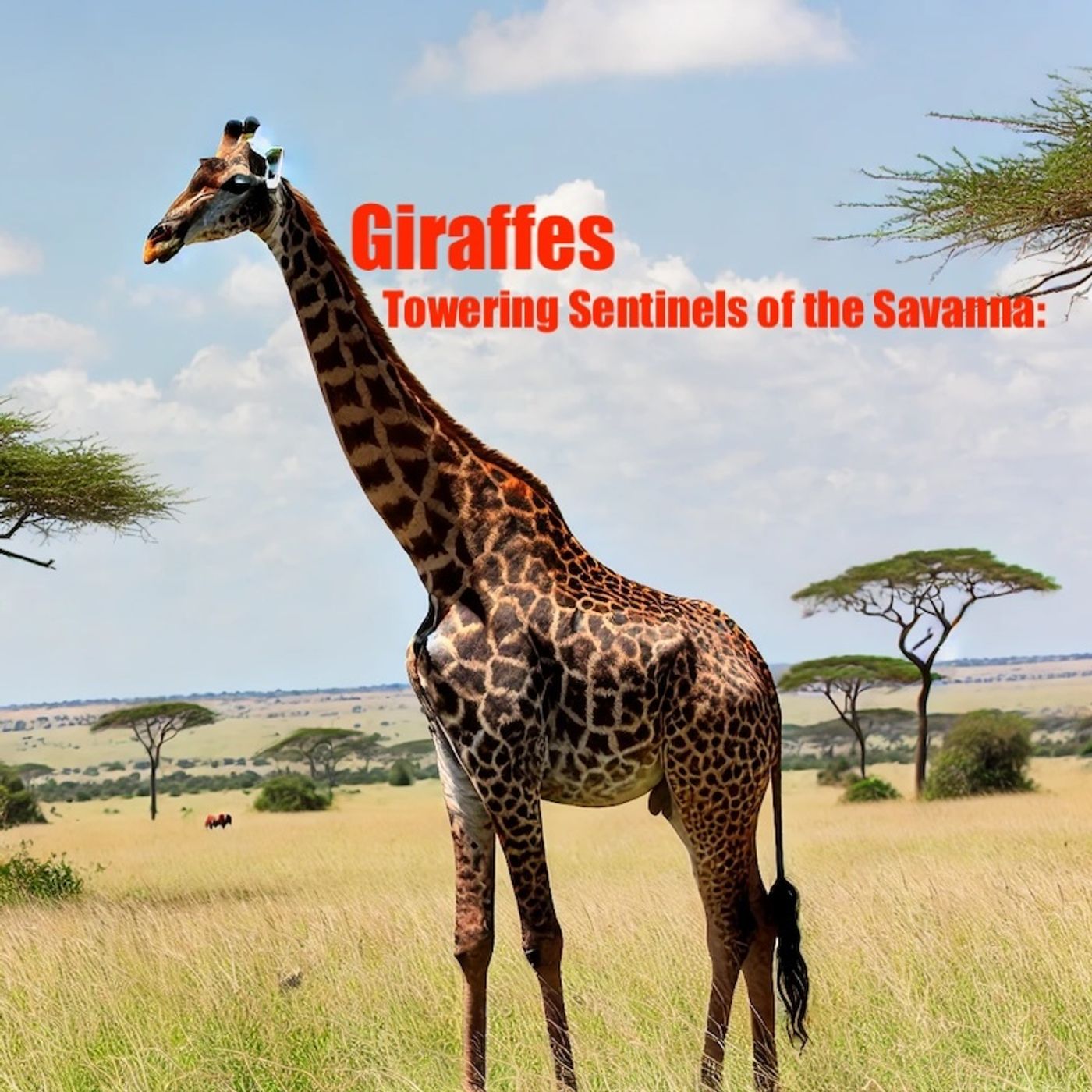Giraffes- Towering Sentinels of the Savanna
Description
In the vast, open landscapes of Africa, where the golden grasslands stretch to meet the horizon and acacia trees dot the plains, one creature stands above all others, both literally and figuratively: the giraffe. These elegant and enigmatic giants, with their long necks and distinctive spotted coats, are among the most iconic animals of the African wilderness. To witness a giraffe in its natural habitat is to experience a sense of awe and wonder at the beauty and complexity of nature. Giraffes, the tallest land animals, are a testament to the ingenuity of evolution and the resilience of life on Earth. The Majesty of Giraffes Giraffes are the tallest land mammals, with adult males reaching heights of up to 18 feet (5.5 meters) and females slightly shorter, up to 14 feet (4.3 meters). Their extraordinary height is primarily due to their long necks, which can measure up to 6 feet (1.8 meters) in length. This remarkable adaptation allows giraffes to browse foliage that is out of reach for most other herbivores, giving them access to a unique ecological niche. A giraffe's body is equally impressive. They have long, slender legs that are powerful and capable of running at speeds of up to 35 miles per hour (56 kilometers per hour) over short distances. Their bodies are covered in a unique pattern of patches, which can range in color from orange to brown and are separated by lighter hair. These patterns are not only beautiful but also serve as camouflage, helping giraffes blend into the dappled light of their savanna habitat. The giraffe's neck, despite its length, contains only seven vertebrae—the same number as in most other mammals, including humans. However, each vertebra is much longer, and the joints between them are highly flexible, allowing for a range of motion that is essential for browsing high foliage. Feeding Habits and Diet Giraffes are herbivores, and their diet consists primarily of leaves, flowers, and fruits from trees and shrubs. They are particularly fond of acacia trees, whose leaves provide a rich source of nutrients. Giraffes use their long necks and prehensile tongues, which can be up to 18 inches (45 centimeters) long, to grasp and strip leaves from branches. Their tongues are also tough and covered in thick, sticky saliva, which protects them from thorns and helps them handle their food. An adult giraffe can consume up to 75 pounds (34 kilograms) of food per day. Their digestive system is adapted to process large quantities of fibrous plant material. Like other ruminants, giraffes have a four-chambered stomach, which allows them to efficiently break down cellulose and extract nutrients from their diet. This process involves regurgitating and re-chewing their food, a behavior known as cud-chewing. Giraffes' feeding habits have a significant impact on their environment. By browsing on the foliage of tall trees, they help shape the structure of the savanna and promote the growth of new shoots and leaves. This selective feeding also benefits other herbivores by maintaining the health and diversity of the vegetation. Social Structure and Behavior Giraffes are social animals, living in loose, fluid groups called towers. These groups typically consist of related females and their offspring, but they can also include males, especially younger ones. The social structure of giraffe groups is relatively flexible, with individuals joining and leaving the group as they please. This lack of a rigid hierarchy is unusual among large mammals and reflects the giraffes' adaptation to a wide-ranging, resource-sparse environment. Male giraffes, known as bulls, often engage in a behavior called "necking" to establish dominance and compete for mating opportunities. This ritualized combat involves swinging their necks and heads at each other, using their ossicones—small, horn-like structures on their heads—as weapons. These bouts can be intense, but they rarely result in serious injury. Female giraffes, or...
More Episodes
Published 07/07/24


